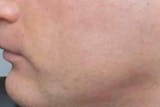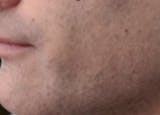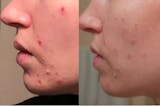Eczema is a complex mix of factors. Tracking your symptoms helps identify what is at the root of your eczema.
Use your symptom diary to engage effectively with healthcare providers and tailor your treatment plan.
Eczema has many different contributing factors making it hard to isolate variables and figure out what your personal triggers are, how your immune system is reacting, and how strong your skin barrier is at any moment. Logging a few parameters can help you understand the progression of your condition, identify triggers that might exacerbate your symptoms, and evaluate the effectiveness of various treatments.
This article aims to guide you through the importance of monitoring eczema, various methods for doing so, and how to translate your observations into an effective management plan.
JUMP TO SECTION:
The Benefits of Proper Eczema Tracking
The degree and length of eczema flare-ups are influenced by three key areas:
Triggers and their intensity in your environment
Within each of those areas reside a broad range of factors. For example, our Trigger Concerns section comprises 6+ articles, each with multiple sections, on everything from allergies to food to stress.
By tracking symptoms against these areas of concern, you will be able to use a scientific approach to locate the keys to your eczema.
With those keys you can:
Find your triggers - you will be able to see through delayed reactions to substances
Know what to look for next - in a multivariate situation like eczema, it can be challenging to isolate specific variables to test. With thorough tracking and enough data, the statistical significance of one relationship can be determined simultaneously to other relationships
Free from mental baggage - logging skin symptoms, trigger exposure and treatments in one place releases your mind from attempting to follow all the parameters of time
Communicate clearly with your health team - for some treatments, e.g. topical steroids, it is important to limit their usage. With a tracking sheet, it is easy to follow how much you have used and figure out when you need to stop and to communicate with your team how well treatments are working.
Improved confidence - it is all too easy to question everything in your life as a trigger. The tracking sheet can reveal what is good and what’s not and improve your confidence in these assertions.
All of the above are great to share with your treatment team. It helps smooth conversations with providers if you can offer direct evidence over time.
Your detailed records can guide the conversation and help your provider tailor your treatment to your specific needs.
Tracking Your Symptoms
Tracking is a quantified approach to learn more about your condition and determine triggers and effective treatment.
If it were possible to know the symptom intensity of your flare at all times and all the things that you have been exposed to, it would be very easy to understand what is causing the skin to get worse and what helps it to recover. The aim with tracking is to log relevant parameters about your skin condition and certain trigger and treatment parameters to determine if there is a relationship.
It is not possible to log everything all the time, so some simplifications must be made, and we are here for you on that front.
To get set up, here are some things to figure out:
What symptoms define your flare? For example: itchiness, dryness and inflammation
What treatment do you use? For example: moisturizers, topical steroids and antihistamines
What triggers do you know you have (whether for your skin or somewhere else)? For example: grass pollen allergy, dairy and bio laundry detergent
What treatments would you like to test out? For example: prescriptions, salt bathing and meditation
What potential triggers are around you? For example: alcohol, cat allergy and dry weather
Are there any notes you can add to add some context? Similar to a journal entry
Once you already know what parameters to track, you can define the scoring system you will use. It is important to be consistent with the scoring so try to write this down so you can refer back to it. For example: every parameter is scored between 1 and 10. For symptoms “1” means “no symptoms”, “5” means “widespread coverage and/or moderate intensity” and “10” means “full body and/or extreme intensity”.
It is recommended that tracking is done digitally so that you can make full use of the dataset. With a spreadsheet, you can plot the symptoms, triggers and treatment over time for analysis. Further statistical analysis can expose the statistical significance of any correlations.
It can be beneficial to take photos of symptoms to be able to compare how these change over time and show these to a doctor for context.
Journaling
Journaling is a method of making notes of your thoughts and feelings. In the context of eczema, one could make notes of the severity of skin symptoms and how they changed through the day as well as how this felt and the thoughts that came up.
The act of putting these things into words can help to build awareness of what is going on, gain perspective of how you feel and notice trends. This can help to draw information out of the apparent chaos of eczematous life.
Examples of things to note down in an eczema journal are but not limited to:
Date
Weather (including relevant pollen forecast)
How your skin felt
What treatment you used and how much
Of the triggers you have selected to monitor, were any present in your environment?
Did you notice anything helped with your eczema?
When you have time, it can be beneficial to revisit your journal to flick through past entries to see if there are any trends. You can look for repeat offenders or certain potential triggers to pay attention to in the future. Including your feelings and thoughts can help to offload the mental burden of living with eczema.
It can help with self-awareness and benefit your mental wellbeing. For more on mental health, see the mental health page.
If necessary, you can take photos of your skin to keep a visual log of the severity of your skin. This can be a good way to track how your condition changes over time and therefore notice if your treatment needs to change.
Another opportunity is to log what you eat each day. If you have skin symptoms and the ingredients you have eaten, you might notice that certain foods are good and others are bad for your skin. See the food and diet and nutrition pages for more information on diet.
The Challenges of Eczema Tracking
There are some challenges to be aware of with proper eczema tracking:
Setup - once the spreadsheet is set up, it is simply a case of filling it in each time. The setup can be a challenge if you are less technically savvy or not in front of a convenient device.
Consistent scoring - it is super important that the numbers you assign are consistent with the scoring system. Try to assign a score objectively
Consistent rate - decide a rate to enter information and try to stick to it. Any more than once a day can be very challenging over the long run. If you miss an entry, try to fill it in as best you can
Complexity - it is not possible to log everything and the more you try to follow the less likely you’ll be able to sustain it so try to keep it simple. If you do not see a correlation between triggers and worsening symptoms after two weeks, consider changing the triggers you are tracking.
Emotional challenges - Living with a chronic condition like eczema can take a toll on your emotional and psychological well-being. The process of symptom tracking can sometimes amplify these feelings, as it involves regular focus on your condition and its impact on your life. It's important to acknowledge these feelings and seek support when needed.
Finding The Right Solutions
Once you've begun monitoring your eczema symptoms and identifying possible triggers, the next step is to use this information to create an effective management plan. Here's how to go about it:
Take Your Journal to Your Doctor
A symptom diary can be a valuable tool during your appointments with your healthcare provider. It offers a comprehensive view of your symptoms over time and can provide insights that might not be apparent from a single office visit.
During your appointment, discuss your observations with your provider, and don't hesitate to ask questions. The more information your provider has about your condition, the better they can tailor your treatment plan to your specific needs.
For those concerned about topical steroids and topical steroid withdrawal, a symptom diary can provide objective proof of how the treatment is affecting your skin.
Interpret Your Symptoms to Guide Your Treatment Plan
Your symptom diary can also help you make informed decisions about your treatment approach. For example, if you've noticed that certain skincare products exacerbate your symptoms, you might decide to avoid these products or find alternatives.
Similarly, if you find that your symptoms improve with specific treatments or self-care practices, these can become key components of your management plan. Remember, effective eczema management is not a one-size-fits-all process; it's about finding what works best for you as an individual.
Discussing Common First Steps in Management Based on Prevalent Symptoms
Based on your symptoms, some common first steps in eczema management might include implementing a regular skincare routine, avoiding known triggers, and using over-the-counter or prescription treatments as directed by your healthcare provider.
For example, if dryness and itching are significant symptoms for you, a regular routine of gentle cleansing and moisturizing might be beneficial. If stress triggers your flare-ups, stress management techniques like meditation or yoga might be worth exploring.
What to Investigate Next?
The act of tracking your symptoms, while initially challenging, is a powerful strategy to gain insights into your condition, identify triggers, and evaluate treatment efficacy. These insights can greatly enhance your quality of life and empower you to take control of your eczema.
In furtherance of this understanding, we recommend delving into the different sections of our eczema guide. This will provide a comprehensive perspective on the various aspects of eczema management:
Visit our allergy tests section to gain insights into potential allergenic triggers and consider getting tested to know what allergies you may have.
Explore the food and diet and nutrition sections for information on the potential impact of dietary choices on eczema.
Check out the triggers section to learn about different eczema triggers and how to monitor them effectively.
Remember, managing eczema is a journey that you don't have to navigate alone. Regular consultations with healthcare providers ensure professional evaluation and personalized treatment plans. They can help you interpret your symptom diary, provide expert advice, and offer support when needed.
Finally, we invite you to share your experiences. Tell us about your successes and challenges in managing eczema. Are there strategies that have been particularly effective or ineffective for you? Is there anything you feel we've missed in this article? Your insights and experiences are invaluable, both for us and for others trying to better understand and manage their eczema.



